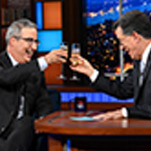Craft Beer Is Mired in Creative Stagnation, And I Don’t Know What Will Save It
Photos via Unsplash, Jose Hernandez-Uribe, Matthew Sichkaruk, Josh Olalde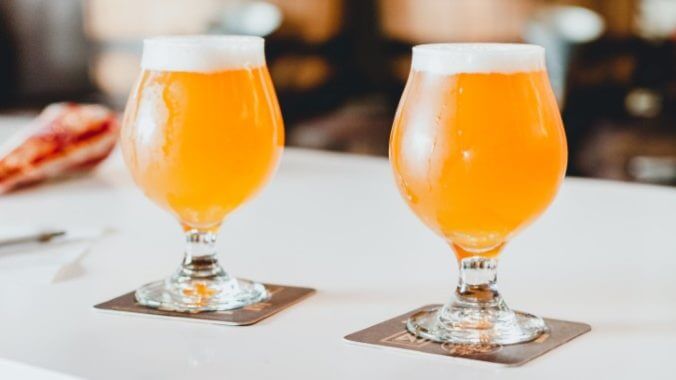
Think back to five years ago. What craft beer styles were driving attention and hype in an era before we had the faintest inkling of the COVID-19 pandemic, the craft beer industry’s slowdown, and the existential challenges faced by so many breweries today? What were drinkers chattering about and lining up for at festivals? What was seen as the state of the art?
My answer would be the following: Hazy, juicy IPAs, followed by cloyingly sweet pastry stouts, fruit-drenched sours, and the occasional respite of lager. Already at that point in 2018, I had personally hit something of a wall with many of these styles, and was attempting to put into words the way that a style like hazy IPA had already crossed the point of cultural saturation and increasingly ventured into cartoonish excess.
Meanwhile, in 2023, what is now the main driver of hype and chatter in the craft beer world? Well, it’s … hazy, juicy IPAs, cloyingly sweet pastry stouts, fruit-drenched sours and the occasional respite of lager. Oh, and some malt alcohol-infused cocktails. Welcome to the spiritual ennui of the beer world, a problem at least partially separate from the myriad economic factors that have made it so daunting to run a successful small brewery in this day and age. On the most basic level, the craft beer landscape has simply felt trapped in stylistic stasis in recent years, a far cry from the previous era of new discovery and growth that was fueled in the 2000s and 2010s by a market in which it was so much easier to turn a profit. This stagnation has no doubt played some role in the migration of craft beer drinkers to other segments of the alcohol world, and I’m afraid I have no solution to offer up: When drinkers perceive an entire category as played out or depleted, how can you convince them otherwise?
How Did Craft Beer End up in This Rut?
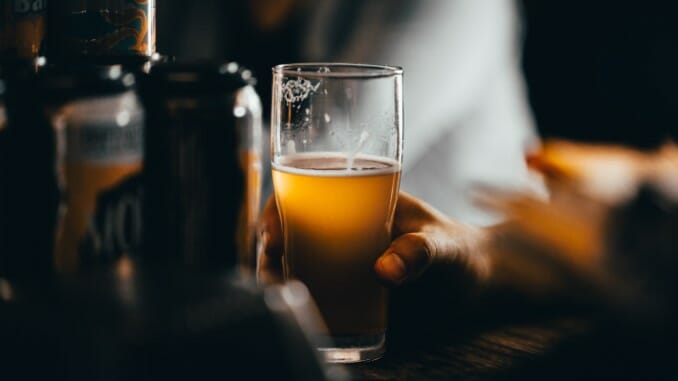
It’s difficult to look at the craft beer scene’s still-recent past without donning rose-colored glasses in many respects. To be certain, there’s always been a proliferation of bad beer and chintzy breweries in the American craft beer industry, companies that have latched on to each wave of growth and relied on a rising tide to lift their boats. But at the same time, I don’t think it’s unrealistic or entirely rooted in nostalgia to say that the experience of being a nascent beer geek/consumer was simply more rewarding a decade ago than it likely is today.
As recently as the mid-2010s, consumers enamored with the craft beer industry still likely felt as if the beer world was in a state of near-constant evolution and introduction of novelty. And in many respects, it was. India pale ale was undergoing transformation after transformation, splitting off down paths of greater and lesser strength, changing color and texture, while new hop varietals crept into the market and transformed the very idea of what “hoppy” flavors could be. Experimentation with wild ales, bacteria and barrel-aging was yielding unclassifiable new American styles in a veritable farmhouse revolution. And at the same time, historic European styles were still being widely introduced into the U.S. market for the first time, making a beer like gose seem like a genuine revelation to drinkers in the mid-2010s. Every week, it felt like there was something new to discover–and not just new batches or iterations of what we were already familiar with, but dramatic stylistic evolutions that opened new doors for even more growth and change. It was a very exciting time to be a beer geek.
And frankly, that’s probably not sustainable forever, is it? Eventually, you will mine every vein of inspiration from classical or historic beer styles, and instead of being able to introduce gose to everyday drinkers, you’re trying to sell a demographic that has increasingly lost its appreciation for subtlety on the pleasures of something obscure like … Polotmavý Ležák, or “half dark” Czech lager, which I’ve now seen several times locally in the last year. And it doesn’t even matter if that style might be delicious; good luck finding the right marketing angle for it in 2023. Nor could most breweries just keep on selling that classic gose they introduced 8 years back–now to appeal to the current market it needs to be DOUBLE MANGO COCONUT CREAM GOSE or something of the like. We seem to have exhausted the easy new avenues of exploration, while increasingly reducing our options to sugar-heavy pablum.
There’s no doubt that the slowing of the craft beer industry’s growth fed into what has become this creative stagnation. Prodded on by the combination of widespread slowing growth and the constant openings of new breweries that blithely ignored that slowing growth for the last half decade, seemingly determined as they were to cannibalize any given market’s available revenue, the go-to move became to embrace whatever styles were seen as the safest bets. That meant a greater reliance on what was selling well in the late 2010s, which was hazy IPA, pastry stout and fruited sours. Combined with the expectation instilled in the consumer that every week should bring new taproom releases, the result for so many breweries has become a constant assembly line of virtually indistinguishable “new” releases in these styles on a weekly basis for the last five years. Is it any wonder that a portion of the drinkers finally tire of this model and begin to migrate elsewhere, to categories such as wine, spirits and cocktails? The reliance on a handful of styles has built into a vicious cycle, where it simultaneously keeps companies afloat but alienates drinkers who are increasingly craving something new they can’t even articulate. Breweries hanging on by a thread, meanwhile, aren’t in a position to risk diversifying their lineups, which only reinforces the status quo.
On a national level, this malaise has even reached those larger craft brewers whose successful flagships had shielded them from the worst of it in recent years, companies such as Sierra Nevada or Firestone Walker Brewing Co., both of whom have flagship brands that are now seemingly in decline. The huge success of a beer like Sierra Nevada’s Hazy Little Thing IPA had for years made the company look immune to the woes faced by most of their closest analogues, but its sales are finally decreasing rather than growing. That kind of decrease can be offset by brand extensions–Sierra Nevada has entire box sets and variety packs of various “Little Things” at this point–but this is another model that can’t be followed indefinitely. At some point, either the cash cow has to rebound, or a new flagship has to emerge. It’s that, or the business goes into decline.
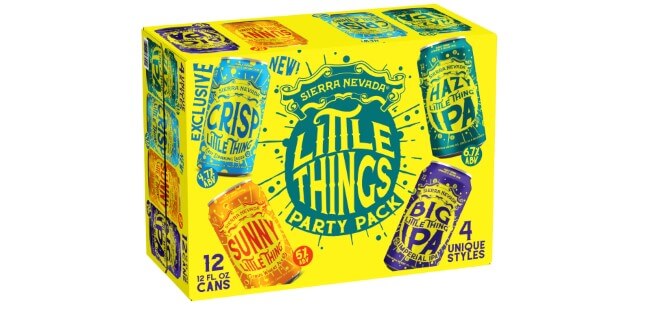
Diminishing returns, in “variety” pack form.
This isn’t to say there hasn’t been some effort on the fringes by breweries to broaden the beer landscape in recent years. The ongoing craft lager boom has for several years been the best thing about the modern beer world, helping at times to offset the increasing loss of other styles that are rarely being brewed. There are still specialists out there, breweries that are fortunate enough to have built reliable audiences making styles such as saison, wild ales or Belgian abbey ales. But all too often, even the supposed new developments in the modern beer scene are failing to capture the imagination of drinkers, registering as a ceaseless parade of fanciful, meme-ready flavors inspired by the likes of candy bars or junk food. Nor are the attempts to revive staid flagships being received with much enthusiasm–look no further than reformulations of the recipes for the likes of New Belgium Fat Tire or Samuel Adams Boston Lager this year, both of which seem to have landed with thuds that demonstrated the attempt to revamp these brands were lose-lose scenarios.
In each scenario, breweries are left in the same position: Trying as hard as they can to hold on to the remaining customer base, unable or unwilling to change in meaningful ways as that base steadily atrophies.
A Glass Half Empty?
I’m a 36-year-old millennial beer and spirits writer, someone who has been passionate about the craft beer scene for roughly 15 years at this point. That’s long enough to have seen the 2000’s era craft beer boom reach its apex of enthusiasm and creativity, before starting to decline in the back half of the 2010s. The consumers I often find myself thinking about now, though, are those who only began exploring craft beer for the first time in the last half decade or so. To those more recent drinkers who discovered the category, it must seem as if the craft beer scene is a largely static thing, with change largely present in the form of “Which fruit is joining the vanilla in the Berliner weisse this week?”
Not all of these drinkers may even realize it, but they’ve been questing for something new. They’re looking for flavors and experiences outside the increasingly narrow band of what craft beer has come to represent in recent years, and if they can’t find those new experiences in the form of beer, they’ll find them in wine, spirits or beyond. This is something that coverage in the traditional media hints at but doesn’t really understand or portray well, as it tends to run years behind the actual sentiment being espoused by drinkers. A major newspaper or web publisher is likely to be acting as if hard seltzer is still the ascendant wave defining the alcohol industry, when in reality that category has also been solidly in decline for multiple years now. The disillusioned beer fan isn’t looking to seltzer; rather, seltzer is statistically being considered part of the industry’s same creative malaise and downturn. When we talk about beer’s stagnation, seltzer is inherently included.
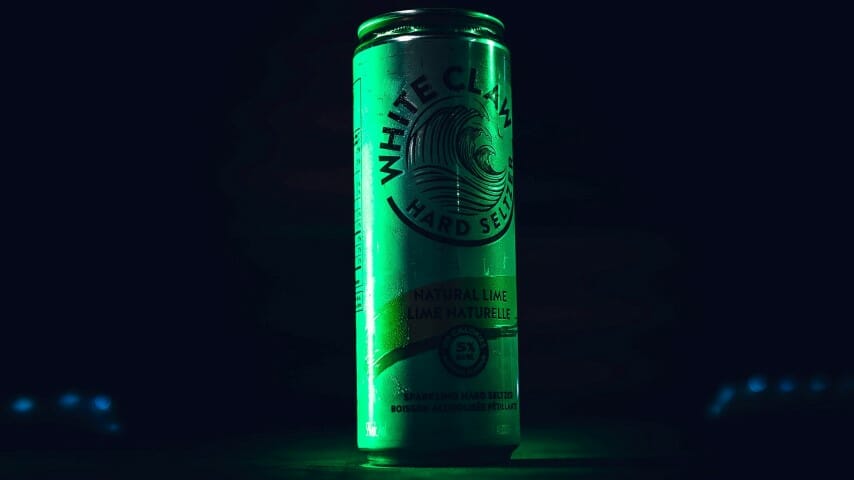
Seltzer isn’t saving anybody.
In a perfect world, this pent-up interest in discovering new flavors and a broader definition of what beer can be might lead not only to the development of genuinely novel new flavors that don’t rely on adjunct-laden crutches, but also a wide-ranging reappraisal of so many classic styles that are now rarely seen by the average consumer. Drinkers tired of wave after wave of modern hazy IPA, for instance, might find themselves enthralled by discovering the gentle florals/earthy hops and malt balance of classic English pale ale, or the bracing bitterness that was once expected in American IPA. People who got into beer in the last five years and have barely been exposed to malt flavors in general might very well be awed by the gentle approachability of a classic ESB, or German altbier, or even an old-school American amber or brown ale. Of course, one of the problems standing in the way of such a revival is that so few of those beer styles surround the average drinker in their market that it’s entirely too easy to gloss over them–and as this happens, drinkers grow more and more set in their overly narrow concept of what craft beer is. The dumbing down of the category has seemingly become self-sustaining.
Creatively speaking, craft beer now finds itself at the lowest point it’s occupied in several decades, but I’m not ready to give up on it. Not all breweries are afflicted by the kind of creative malaise/economic necessity I’ve described here, and the ones making diverse and interesting beer are still businesses I personally visit just as often as I ever did before. In fact, I go out of my way to support those breweries whenever possible. But I can’t deny it’s becoming increasingly hard to find those places, as I’ve watched even breweries I once admired slowly ditch their core identities in the last decade in favor of a slow-drip of saccharine IPA and pastry stout. I can understand why they’ve done it, but that doesn’t mean it doesn’t hurt to see.
The industry’s overall downturn is one of those things that was no doubt destined to come along eventually. After more than a decade of frantic growth, that wave had to recede–it’s just a shame that when it did, it left a craft beer scene clinging to a relatively small handful of styles, unsure of what to do with itself. As consumers, all we can really do is voice our continuing desire for diversity in flavors and experiences, and hope that when beer’s next wave begins, all our favorite styles will again be along for the ride. In the meantime, we should do our best to support those places that haven’t yet felt the need to fall back entirely on gimmick-laden meme beers, and even take it upon ourselves to introduce new drinkers to some of the more subtle styles that once helped to define the American craft beer industry. The more drinkers who are aware of a world beyond “juicy,” the better off we’re ultimately likely to be.
Jim Vorel is a Paste staff writer and resident beer and liquor geek. You can follow him on Twitter for more drink writing.






































